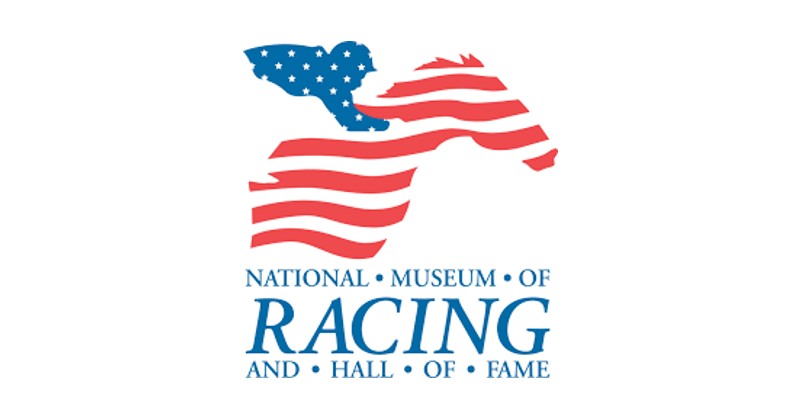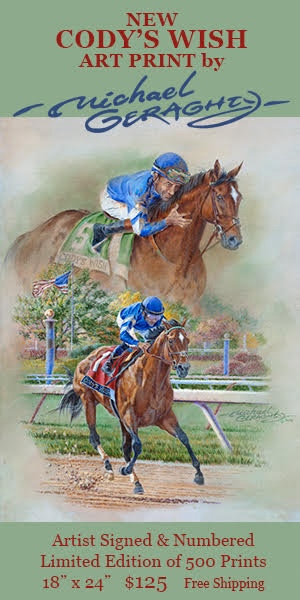
Brien Bouyea/National Museum of Racing
SARATOGA SPRINGS, N.Y.— The National Museum of Racing and Hall of Fame will present special exhibitions celebrating the legacies of Hall of Fame members Paul Mellon and Ruffian this summer. Both exhibits open to the public on Thursday, July 11.
“We are excited to honor and share the legacies of these two outstanding Hall of Fame members,” said Jessica Cloer, the Museum’s curator. “Paul Mellon and Ruffian were both tremendously impactful. These exhibits are a tribute to all they achieved and their lasting influence on the sport.”
A third special exhibition featuring the storied history of Harry M. Stevens Concessions is currently open in the Museum’s Link Gallery. Here is an overview of each exhibit:
The Passions of Paul Mellon: Horses, Art, and Philanthropy
Hall of Fame Pillar of the Turf Paul Mellon held a lifelong passion for horses and achieved lasting success as an owner and a breeder of thoroughbreds with numerous champion racehorses, including Hall of Fame members Arts and Letters and Fort Marcy, as well as Kentucky Derby winner Sea Hero and international superstar Mill Reef. One of racing’s most respected leaders, Mellon also became an avid art collector and donated thousands of works to various notable institutions. His artwork was passed along to prestigious venues such as the National Gallery of Art, Virginia Museum of Fine Arts, and Yale Center for British Art, as well as the National Museum of Racing and Hall of Fame.
Mellon was also one of the greatest American philanthropists of the 20th century and his legacy connects many institutions and foundations today. The exhibition features selections from the Museum’s collection and archive gifted by Paul Mellon along with objects from other institutions that he impacted. Mellon was inducted into the Hall of Fame as part of the inaugural Pillars of the Turf class of 2013.
— On exhibition through March 30, 2025
The Remarkable Ruffian
Hall of Fame filly Ruffian was one of the most brilliant horses of the 20th century. This charismatic dark bay won all five of her races as a juvenile, earning the Eclipse Award for Champion 2-Year-Old Filly. As a sophomore, Ruffian continued to demonstrate her incredible abilities with several record-breaking wins, including a sweep of the New York Filly Triple Crown. Undefeated through her first 10 career starts and lacking competition among the fillies, Ruffian met Kentucky Derby winner Foolish Pleasure in a match race on July 6, 1975, at Belmont Park. They went stride for stride until tragedy struck.
The loss of Ruffian inspired advances in veterinary medicine and increased industry safety measures. The exhibit honors Ruffian’s incredible achievements and her enduring legacy. Ruffian was inducted into the Hall of Fame in 1976.
— On exhibition through Oct. 6, 2024
Hot Dog! The Harry M. Stevens Concessions Experience
Have you ever sipped on a cold drink through a straw and enjoyed a delicious hot dog while watching the races at the track? We can all thank Harry M. Stevens for our modern food concessions at sports venues throughout the country. While in Ohio, Stevens attended his first baseball game in 1887 and recognized the need to clearly identify players. He obtained permission from the team’s owner to produce and sell an improved scorecard. Inspired by this early success, Stevens expanded the business to include food and drink concessions.
Harry M. Stevens, Inc. catered to 20 racetracks throughout the country, including Belmont Park, Churchill Downs, Hialeah Park, Pimlico Race Course, and Saratoga Race Course. “From the Hudson to the Rio Grande” became the company’s slogan after opening its concessions at the racetrack in Juarez, Mexico. As an industry pioneer, some credit Stevens for innovations including the introduction of straws for soda bottles and even the hot dog. When Aramark purchased the company in 1994, it still operated food and drink concessions at some of the nation’s largest sports venues. This exhibit predominantly focuses on Harry M. Stevens concessions at racetracks in the first half of the 20th century.
— On exhibition through January 5, 2025




